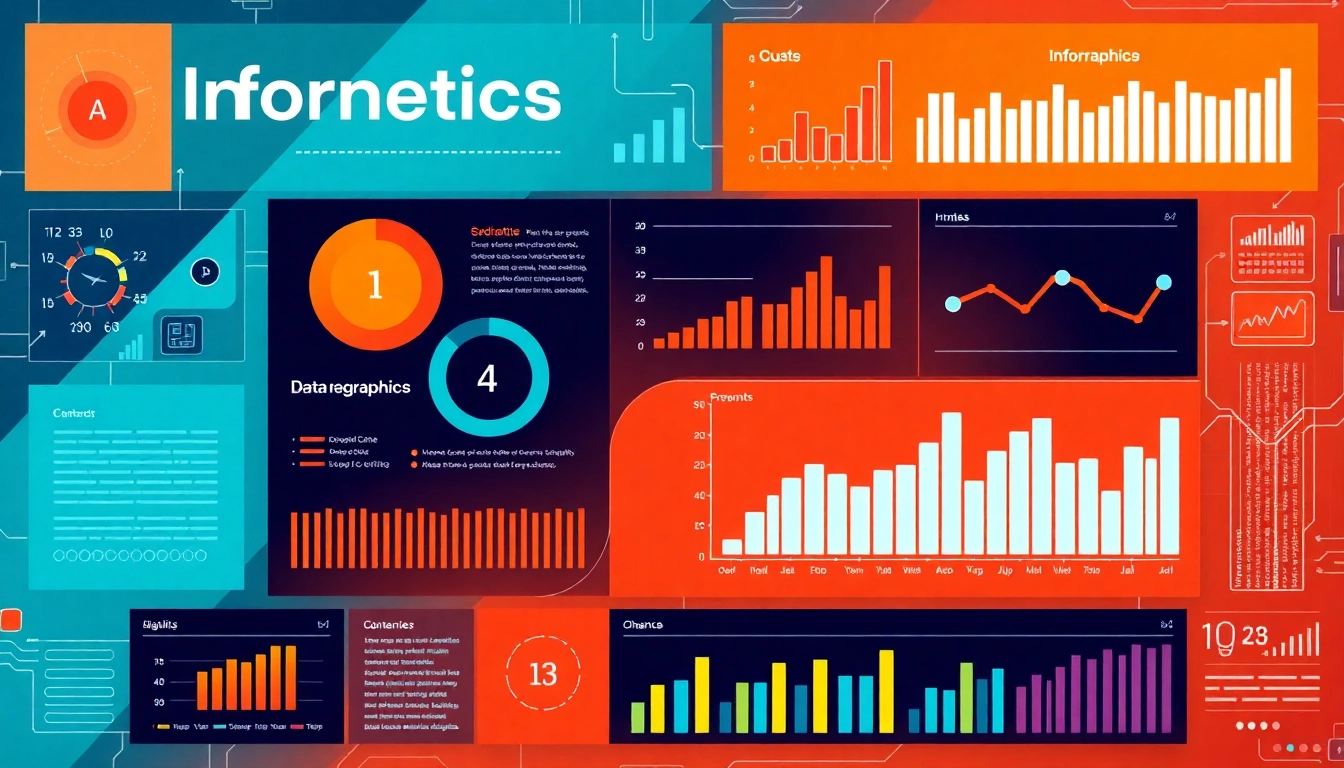Understanding the Basics of Informatics
What is Informatics?
Informatics is a multidisciplinary field that encompasses the processes of acquiring, storing, managing, and utilizing data effectively to support decision-making and enhance the quality of services across various industries. It integrates aspects of computer science, information science, and communication technology, placing emphasis on how information is structured, interpreted, and leveraged. Whether in healthcare, business, education, or research, informatics serves to enhance organizational efficiency and promote data-driven strategies. By understanding informatics, organizations can gain valuable insights from data, ensuring that they remain competitive and responsive to global trends.
The Role of Data in Informatics
Data lies at the core of informatics. It is the raw material that, when processed and analyzed, transforms into meaningful information. In today’s digital landscape, vast amounts of data are generated every second across various platforms, creating a wealth of opportunities for informed decision-making. Informatics relies on data from numerous sources, such as transactional databases, social media, and sensor technologies. The ability to manage and analyze this data effectively allows organizations to uncover patterns, trends, and correlations that can lead to improved services, enhanced customer experiences, and innovative solutions.
Key Terminology in Informatic Practices
In the field of informatics, certain terms are essential for clear communication and understanding. Here are some key terms:
- Data Mining: The practice of examining large datasets to discover patterns and extract valuable insights.
- Data Visualization: The graphical representation of data, enabling easier interpretation and decision-making.
- Big Data: Extremely large datasets that may be analyzed computationally to reveal patterns, trends, and associations.
- Health Informatics: The intersection of information science, computer science, and health care, focusing on the optimal use of data and technology in healthcare settings.
- Predictive Analytics: Techniques that use statistical algorithms and machine learning to identify the likelihood of future outcomes based on historical data.
Core Components of Informatics on informaticsview.com
Data Analysis Techniques
Data analysis is the process of inspecting, cleansing, transforming, and modeling data with the goal of discovering useful information, informing conclusions, and supporting decision-making. Various techniques can be employed in data analysis, including:
- Descriptive Analysis: This technique summarizes historical data to identify patterns and trends.
- Inferential Analysis: Making predictions or inferences about a population based on sample data.
- Regression Analysis: Assessing the relationship between variables, allowing for predictions based on the identified patterns.
- Sentiment Analysis: Evaluating public sentiment or opinions from social media and other online platforms.
Implementing these techniques requires a well-structured approach, including defining the purpose of the analysis, selecting appropriate datasets, and choosing the analysis methods that will yield the most accurate and actionable insights.
Tools for Data Management
Effective data management is crucial for organizations to leverage the potential of their information. Various tools exist to facilitate data management:
- Database Management Systems (DBMS): Software that provides a systematic way to create, retrieve, update, and manage data.
- Data Warehousing: Central repositories of integrated data from one or more disparate sources, enabling data analysis and reporting.
- ETL Tools: Extract, Transform, Load (ETL) tools that help in moving and transforming data into a format suitable for analysis.
- Cloud Storage Services: Allow organizations to store and manage data in the cloud, providing scalability and remote access.
Choosing the right tools for data management ensures that organizations can handle data efficiently, leading to better results from their informatics efforts.
Ethics and Privacy in Informatics
As the use of data in informatics continues to grow, so does the importance of ethics and privacy. Organizations must ensure that they comply with regulations such as the General Data Protection Regulation (GDPR) and the Health Insurance Portability and Accountability Act (HIPAA) while managing data. Key ethical considerations include:
- Ensuring informed consent: Individuals should understand how their data will be used.
- Data anonymization: Personal data should be anonymized to protect individual identities.
- Data security: Implementing strong security measures to protect data from unauthorized access and breaches.
- Transparency: Organizations should be clear about their data collection and usage practices.
Addressing these ethical concerns is critical not only for compliance purposes but also for maintaining trust and credibility with clients and stakeholders.
Advanced Analytical Methods
Machine Learning Applications
Machine learning is a subset of artificial intelligence that involves the use of algorithms and statistical models to enable computers to improve their performance on a task through experience. In informatics, machine learning applications can range from predictive modeling to natural language processing. Examples of machine learning applications include:
- Recommendation Systems: Algorithms that analyze user behavior to suggest products or content, enhancing the customer experience.
- Image Recognition: Technologies that can identify and classify objects within images, with applications in security, healthcare, and social media.
- Fraud Detection: Machine learning algorithms that analyze transaction patterns to identify potentially fraudulent activity.
The integration of machine learning into informatics provides organizations with advanced tools for analyzing data, making predictions, and automating decision-making processes.
Predictive Analytics Techniques
Predictive analytics involves using historical data, statistical algorithms, and machine learning techniques to identify the likelihood of future outcomes. Key predictive analytics techniques include:
- Time Series Analysis: Analyzing data points collected or recorded at specific time intervals to forecast future values.
- Classification Techniques: Used in scenarios like credit scoring to categorize data into subgroups and predict future outcomes.
- Clustering: Grouping sets of objects in such a way that objects in the same group are more similar to each other than to those in other groups.
By leveraging predictive analytics, organizations can gain insights that allow them to anticipate changes, mitigate risks, and enhance decision-making processes.
Case Studies in Informatics
Case studies provide practical insights into how informatics can be implemented effectively in different sectors. A few notable examples include:
- Healthcare Informatics: A health organization uses data analytics to track patient outcomes, improving treatment protocols and resource allocation.
- Financial Services: Banks employ predictive analytics to streamline loan approvals and improve customer service through personalized recommendations.
- Retail Industry: Retailers use data visualization to monitor sales trends and adjust inventory management practices, ensuring the right products are available at the right time.
These case studies illustrate how organizations can harness informatics to enhance operational efficiency and improve service delivery.
Implementing Informatics Strategies
Best Practices for Data Handling
To leverage the full potential of data in informatics, organizations should adhere to best practices in data handling, including:
- Data Governance: Establishing clear policies for data management, ensuring compliance with regulations and standards.
- Data Quality Assurance: Implementing regular checks to ensure the accuracy, completeness, and reliability of data.
- Collaboration: Encouraging teamwork among departments to facilitate a well-rounded approach to data management and usage.
Implementing these best practices enables organizations to optimize their data handling processes, resulting in improved analyses and decision-making outcomes.
Developing Your Informatic Approach
Creating a personalized informatics strategy involves careful planning and alignment with organizational goals. Key steps include:
- Defining Objectives: Establish clear objectives for data usage that align with overarching business goals.
- Assessing Current Capabilities: Evaluate existing technologies, tools, and processes to identify areas for improvement and investment.
- Engaging Stakeholders: Involve key stakeholders in the development process to ensure that the strategy meets the needs of all parties involved.
A well-defined informatics approach will empower organizations to utilize their data effectively, leading to data-driven decision-making and strategic growth.
Performance Metrics to Track
Tracking performance metrics is essential for evaluating the success of informatics initiatives. Important metrics to consider include:
- Return on Investment (ROI): A measure of the profitability of informatics solutions, comparing costs to the benefits gained.
- Data Accuracy Rate: The percentage of correct data entries versus incorrect entries, indicating the quality of data management practices.
- User Engagement Levels: Metrics that assess how users interact with data and analytics tools, providing insight into usability and effectiveness.
- Project Completion Times: Measuring the duration of data projects can help identify inefficiencies and guide future planning.
Continuously monitoring these metrics encourages organizations to adapt their informatic strategies and enhance their overall data management approaches.
Future Trends in Informatics
Emerging Technologies in Data Analysis
The field of informatics is continually evolving, and several emerging technologies are set to shape its future. Key trends include:
- Artificial Intelligence (AI): Enhanced data analysis capabilities through AI and deep learning will allow organizations to discover deeper insights and automate decision-making processes.
- Blockchain Technology: This technology offers secure and transparent transactions, which can enhance data integrity in various applications like supply chain management and finance.
- Augmented Analytics: Leveraging AI to automate data preparation, insight generation, and sharing, empowering more users to understand and utilize data without advanced technical skills.
By adopting these emerging technologies, organizations can significantly enhance their analytical capabilities and improve their strategic decision-making processes.
Challenges Facing the Informatics Field
As informatics continues to grow, it faces various challenges that organizations must navigate, including:
- Data Privacy and Security Concerns: With increasing regulatory scrutiny, organizations must ensure compliance while maintaining data security.
- Data Quality Issues: Insufficient data quality can lead to incorrect analysis and misguided decisions, highlighting the need for robust data governance.
- Integration of Diverse Systems: Many organizations struggle with integrating various data sources and systems, hindering their ability to derive comprehensive insights.
Addressing these challenges requires a proactive approach, fostering a culture of data literacy and equipping teams with the necessary tools and training.
The Importance of Continued Education on informaticsview.com
The field of informatics is dynamic, given the rapid evolution of technology and data practices. Continuous education is vital for professionals in the field to stay ahead of trends and updates. Resources available on informaticsview.com can provide valuable insights into best practices, emerging technologies, and evolving methodologies. Key areas of continued education include:
- Workshops and Seminars: Participating in workshops and seminars helps professionals gain hands-on experience with new tools and technologies.
- Online Courses: There are numerous online platforms offering courses in data analysis, machine learning, and informatics practices, catering to various skill levels.
- Industry Conferences: Attending conferences allows professionals to network with peers, learn from industry leaders, and stay updated with the latest trends.
Investing in continued education will empower professionals to adapt to the changing landscape of informatics, ultimately leading to enhanced organizational capabilities and data-driven decision-making.



